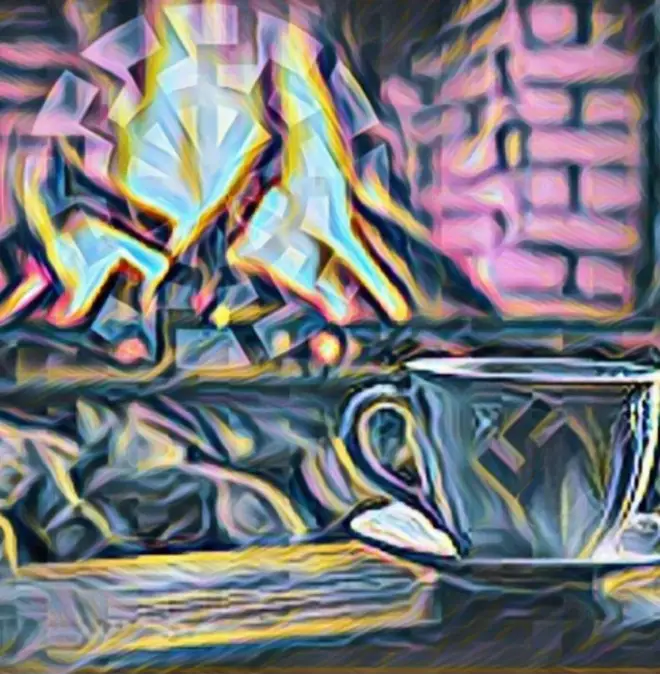Why the Name?

Why was the National Socialist German Workers’ Party called like that if they were against communist ideas?
Why did the “National Socialist German Workers’ Party” have “socialist” in his name?
So glad you asked.
The German Workers Party (hereafter DAP, Deutsche Arbeiterpartei) was a small party in Munich, running on a platform which was a combination of intense nationalism, anti-Semitism, anti-capitalism and, confusingly, anti-Marxism.
It wasn’t totally sure what it was for, apart from Greater Germany!
But it certainly knew what it was against: Jews, Marxists and people who were regarded as subversive foreigners ganging up against good, plain German folk.
In the summer of 1919, an Austrian soldier in the German army named Adolf Hitler was appointed by the army’s intelligence unit to investigate the DAP.
Hitler went along to a meeting and was impressed by the movement’s leader, Anton Drexler. He went to subsequent meetings, and got into an argument with a visitor who questioned some of the party’s policies. Hitler’s skill at out-arguing (and, one suspects, out-shouting) the visitor so impressed Drexler that he asked Hitler to join.
The DAP’s main rivals for the working-class vote in Germany at the time were the Social Democratic Party of Germany (SPD) and the Communist Party of Germany (KPD).
In 1919/20, remember that the Russian Revolution was a recent event. Stalin was not yet leader of the USSR, merely a member of the Politburo. The Great Purges hadn’t happened yet.
Socialism and communism were the ideologies that seemed to offer hope to working people. If you weren’t a self-proclaimed socialist, you were perceived as being on the sides of the bosses.
Hitler would change all that, but at this point he didn’t know it.
He joined the DAP in September 1919 and quickly became its most active and persuasive speaker. His emphasis was on nationalism and anti-Semitism: Germany was overrun with Jews controlling the purse-strings, and something had to be done about it.
The DAP’s meetings started getting bigger and bigger very quickly. In early 1920, they decided that in order to appeal to the kind of people who were being attracted to the SPD and KPD, it would help if they at least looked socialist.
The problem with communism was that the Soviet Communist Party was dramatically successful at the time, having overturned the Russian monarchy and, well, killed them, and communism being an internationalist ideology, communists in other countries would be taking their cue from the Russians. (This only really started to happen after Stalin assumed power in 1924, however.)
In February 1920, Hitler gave a speech which attracted 2000 people.
On the same day, the DAP decided to change its name to the National Socialist German Workers Party (NSDAP)—a name that they had in fact nicked from another organisation in Austria at the time, the German National Socialist Workers Party (which would later be folded into the Nazi party in the 30s.)
Hitler didn’t like the name. He wanted them to be called the Social Revolutionary Party, but he was persuaded by fellow party member Rudolf Jung that including ‘national’ would attract more nationalists, and including ‘socialist’ would attract people who thought that the party would be good for working people.
So Hitler, who was not yet party leader, went with the decision, and made some rather fatuous statements in interviews claiming that the NSDAP was ‘true socialism’, unlike Marxism or communism, all in order to make the NSDAP seem like an attractive party to people who wanted a better deal for the working classes.
As time went by, and Hitler gained more control over the party, he gradually edged out its more left-wing elements. He finally assumed supreme control in 1934 with the so-called Night of the Long Knives, in which he had a number of senior party members murdered, including Gregor Strasser, who had been the one most inclined to indulge in anti-capitalist rhetoric, and Ernst Röhm, head of the NSDAP’s paramilitary wing, the SA. Röhm had had a vague idea of redistribution of wealth centred around him and his SA men being rewarded for helping to bring Hitler to power.
After that, the ideology of the NSDAP was whatever Hitler said it was. Having gained power partly as a result of years of street violence, the party had to reassure the German middle- and business classes that they were now respectable and that there would be no more talk of revolutions.
The SPD and KPD were banned, and their members thrown into concentration camps.
After that, the NSDAP in power steered a path between its nationalistic, anti-Semitic and militarist principles, and its need to keep people reasonably contented. It promoted the family, proclaimed that the proper role of woman was being a wife and mother, proclaimed Germany’s greatness, insisted that the true enemy was the Jews, and stamped out dissent and criticism, not by not listening to it but by burning books and shooting people.
It rebuilt the German economy by means of a huge program of rearmament, the idea being that the deficit would be covered by plundering the territories that Germany would conquer in the war that they planned to have.
This process poured huge amounts of money into the German businesses that supported the regime: Krupp, Messerschmitt, IG Farben, etc.
Whatever socialism the DAP had once espoused was long forgotten.
